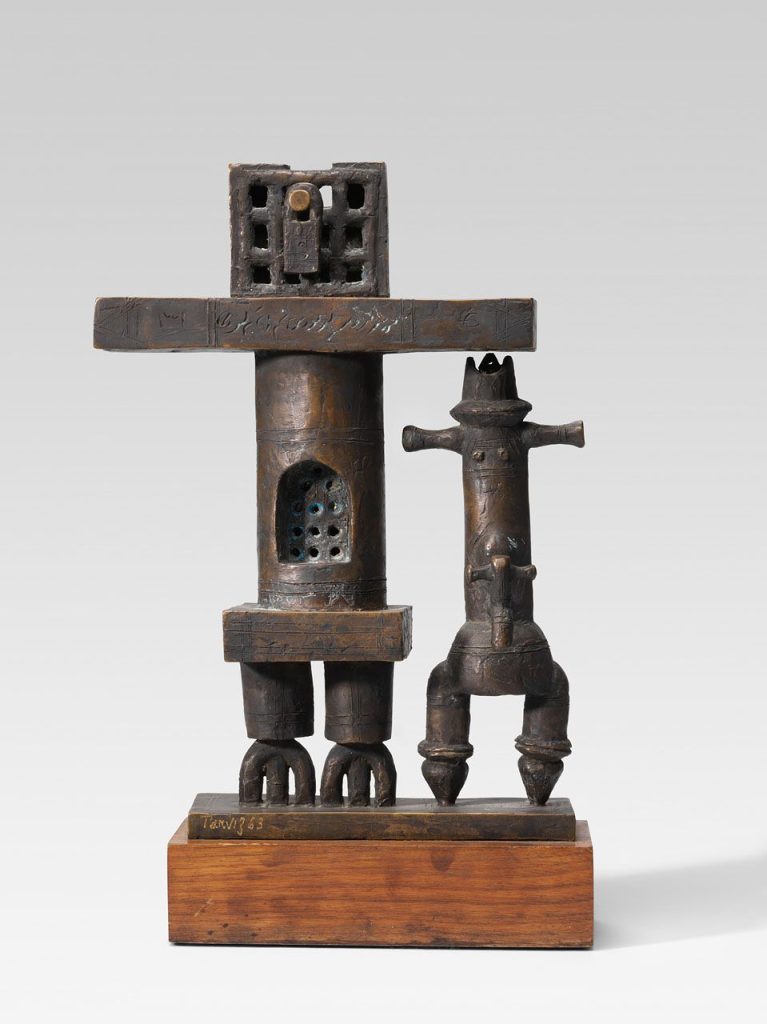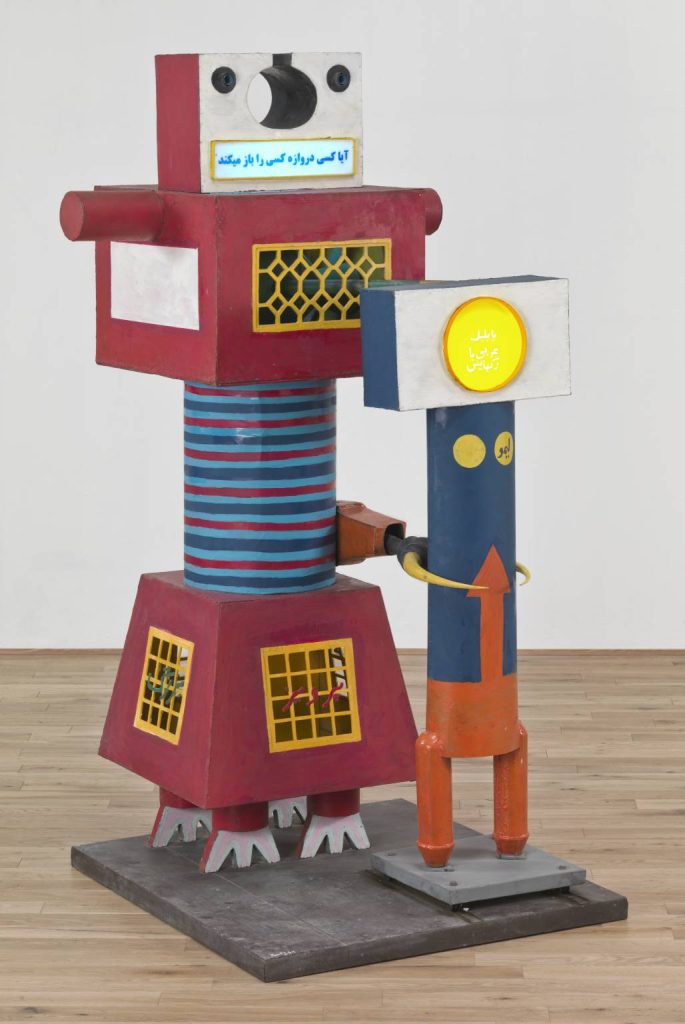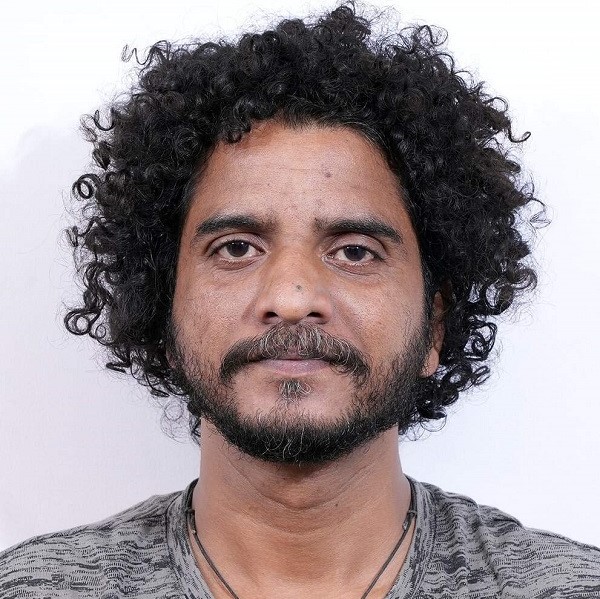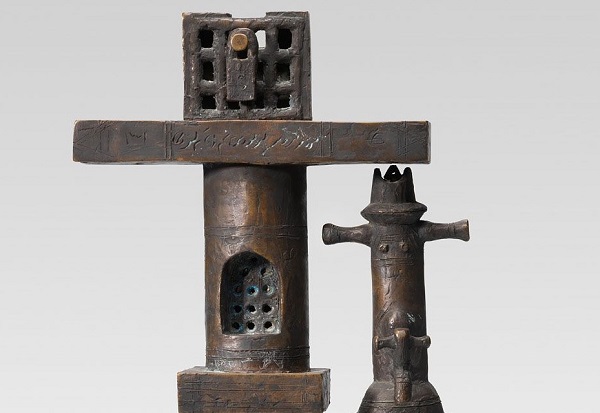Is Parviz Tanavoli a poet or a Prophet in contemporary Iranian Art? Parviz became a popular and pioneering figure in Iranian Art over the last six decades, and he used Persian traditions to modernise and reinterpret Iranian Art. After completing his studies in Art in Tehran in the 1950s, Parviz started to create Artwork that positioned him in the centre of contemporary Iranian Art. The Iranian Government encouraged the creation of Artworks and the development of National and Traditional Arts in the 50s; Parviz used this opening to make his artworks.
After graduation, Parviz toiled to find a way to modern Art through traditional Iranian Art; he used renewed sculptural idiom from a wax or clay sculpted form and cast it in bronze to do this. Parviz intends to find an ‘Avant-Garde’ sculptural form as part of an Art movement called Saqqakhaneh, indicating the Iranian Modern Contemporary Art that forever brings a perspective change in Iranian Art. In the 1940s and 50s, Parviz and together with Faramarz Pilaram, Massoud Arabshahi, Mansoor Ghandriz, Nasser Oveisi, Sadeq Tabrizi and Zhazeh Tabatabai, coined the movement of Saqqakhaneh creates an ambience of new forms of artistic practice in Iran. Artists who were part of this movement blended Iranian traditions and traditional arts with Western Art and style, creating contemporary ‘Iranian Modern’ Art. For this, Saqqakhaneh Artists use the stylistic traditions of Iranian local visual culture and symbols, calligraphy, zodiac signs, astrolabes, amulets and talismans, religious motifs and other local essences.

In some works, Parviz tells a local story in ‘Western’ style or reinterprets an anecdote through a Westernised language. After graduation, Parviz left Iran for more study in Milan, returning with many ideas of how to modernise Iranian Art. The new ideas that enriched Parviz are reflected in his Art practice and his studio in Tehran, which became a hub of exhibitions, collective discussions and debate. From that studio, Iranian Art grew much with popular culture and its symbols, and they started to reinterpret the local visual vocabulary and traditions.
‘Building his works incrementally, whether vertically or horizontally, he developed a vocabulary of welded faucets, tubes, knobs, grillwork and the keys and locks he collected in small towns and local bazaars. Fused, these agglomerations ultimately yield the image of a gendered figure or generic couple, primitive and regal. Neither inhabitants of the unconscious, as in the work of Max Ernst, nor warriors of the machine age, these creatures belong to a preindustrial era, as written by Art historian and curator Fereshteh Daftari about The Poet and the Beloved of the King and its local, everyday materials, quoted by Tate.
The Poet and the Beloved of the King

In his The Poet and the Beloved of the King (1964–6), Parviz uses a geometrical composition that suggests one is always more prominent than the other, made out as influential, brightly coloured in various cubic, cylindrical and abstracted forms. Parviz uses the semiotical element in this sculptural work to communicate the connotation of the language we used. In this work, two yellow rounds are marked in the shorter figure and written as ‘Limou’ (Lemon), deciphered as ‘breast’ in the Farsi language colloquially. Lemos is used as a symbol of sexual expressions in Parviz’s works, and colloquial language connotations bring them into a semiotical dialogue between Artwork and the locality.
Parviz’s sculptural works bring his local language as an element of Art, like ‘Aahoo’ (Deer) and ‘Ya Bol Bol, arabi ya raghayash‘ (‘Oh Arabian nightingale, oh his veins’) in large and small figures. These letters and their colloquial meaning carry us into a language play of sculptural form with a painted red phallic arrow as the dominant feature of this structure.
“My entire childhood and adolescence were about manners. In addition to home, I was required to be polite and clean at school too. The assistant principal praised methods every morning, and the calligraphy teacher asked us to repeat lines commending manners. But outside home and school, it was very different. No one else was as clean as we were. On the streets, we sometimes ran into men who used dirty words to call each other’s mothers and sisters, suggesting intimate relations with them. I have never forgotten some of those scenes from life back then, said Parviz Tanavoli in the catalogue of ‘Exercise Writing: Tanavoli and 50 Years of Pop Art, curated by Tarlan Rafiee and Yashar Samimi Mofakham.
The Art Practice of Parviz moulded his Art, which helped resonate with the art practice of many in the last six decades in Iran and the middle east. He is an Artivist who uses the cultural inheritance of Iranians to reach the polar points of creative expression. For the last many decades, Parviz has focused on Iranian local, tribal, and folk Art forms and has written more than twenty books on different subjects like amulets, locks, scales and weights, kohl containers, and monuments, as well as many books on hand-woven textiles, tribal and village kilims and rugs. Parviz shows his interest in the local Iranian culture and heritage in all this research, and this research on different titles enriched his Artistic magnets.
Parviz Tanavoli: An Iranian God of Pop Art
After the training in Milan, he returned to a treasured land of Iran; Pariviz commented, “Discovering Tehran’s south-side in 1957 was like discovering a gold mine for me.” Parviz used the knowledge and the crafts of the local people from Iran; he learned the language of street vendors, tinkerers, and spell writers. He also visited metal shops and pottery studios and made company with industrial workers. All these activities are reflected in his works, which makes them not readily deciphered. Parviz brings back the forgotten history of Iranian Art and folk culture that helps people worldwide understand the great history of a great country.
When Andy Warhol was celebrated as a Pop artist in America, Parviz’s works didn’t count as Pop Art, while using the pop elements of glueing pieces of carpet and pumpkin seeds on a canvas wasn’t taken seriously. Parviz defines Pop art in the Iranian context as popular, narrative, poetic, critical, bold, exciting, and confusing, but it is ingrained in idioms, tales, beliefs, and folk creations.
Contemporary Art critics from Iran strongly suggest Parviz is a truly inspired artist who blends everything with pop art, from sculpture to painting, print to research.
Reference: tate.org.uk

Krispin Joseph PX, a poet and journalist, completed an MFA in art history and visual studies at the University of Hyderabad.





